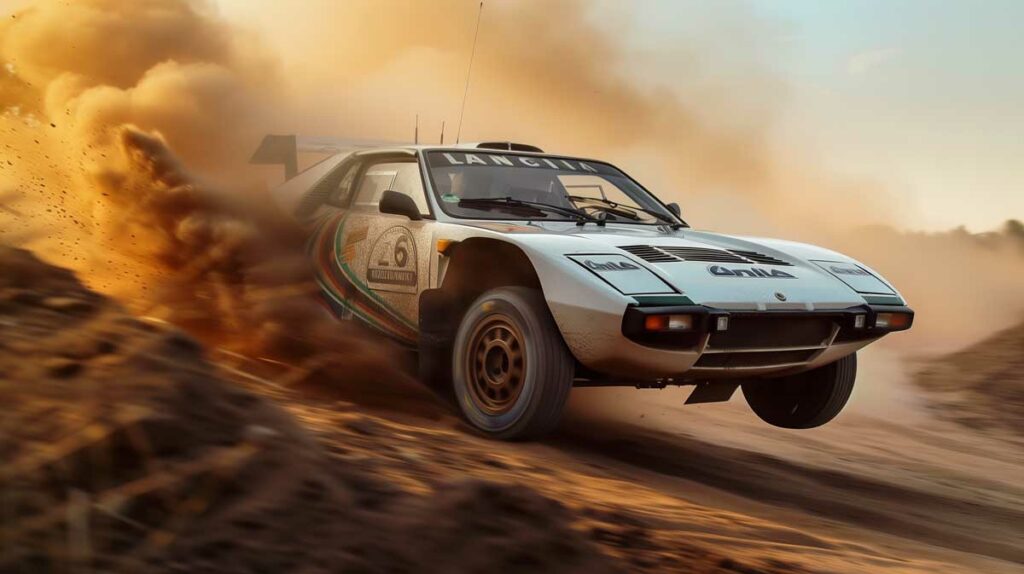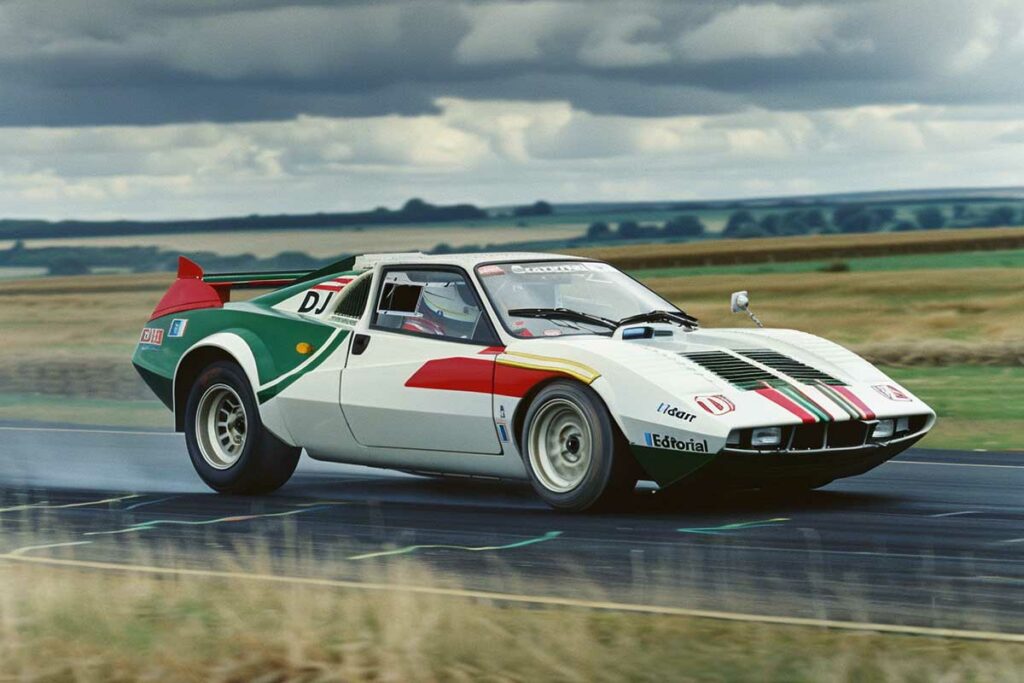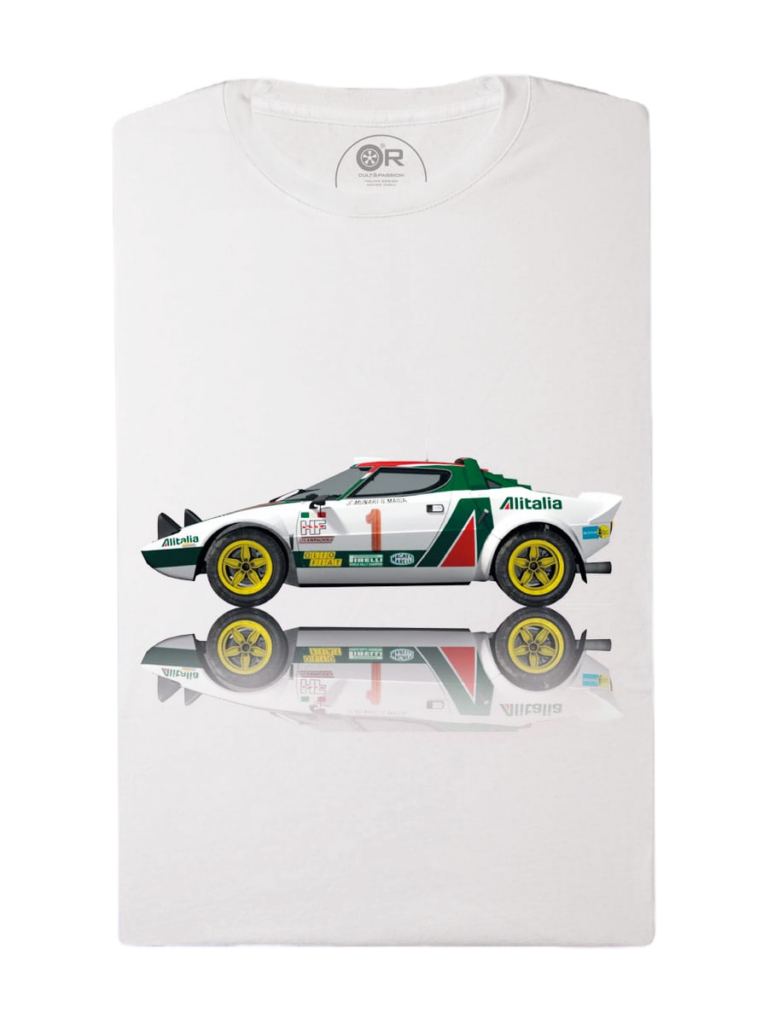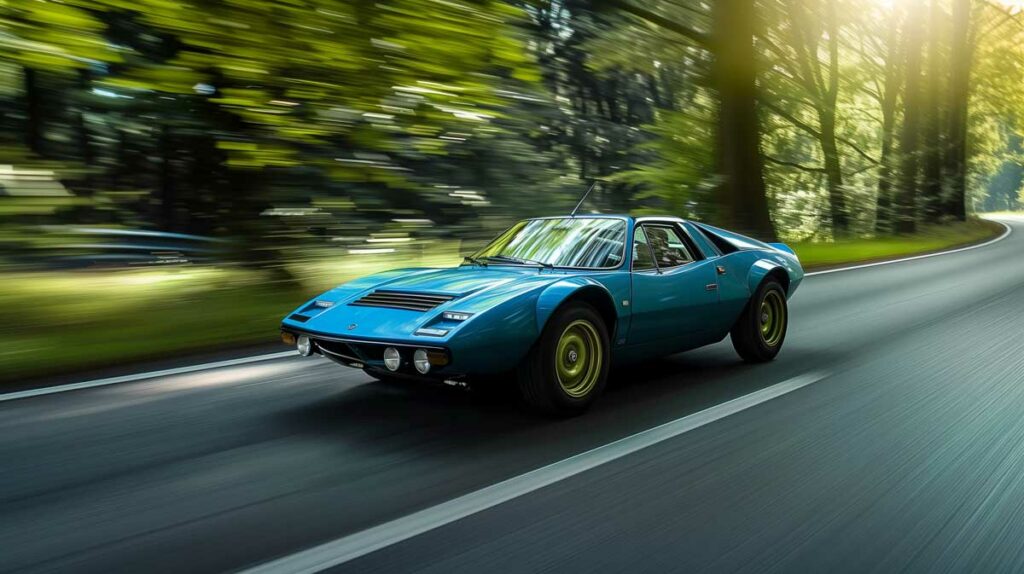Introduction to the Lancia Stratos
In the annals of automotive history, few cars have left an indelible mark quite like the Lancia Stratos. This revolutionary rally car, born in the early 1970s, stood as a testament to the audacious spirit of its creators and the relentless pursuit of engineering excellence. The Stratos was more than just a machine; it was a disruptive force that reshaped the very essence of rally car design, ushering in a new era of innovation and captivating enthusiasts with its distinctive aesthetic and uncompromising performance.

Revolutionary Design
The Lancia Stratos was a product of revolutionary design and engineering, combining a distinctive wedge-shaped body with a mid-mounted Dino Ferrari V6 engine. This eclectic combination of form and function established the Stratos as a historic icon from a design perspective, setting it apart from its contemporaries.
Distinctive Wedge-Shaped Body
One of the most striking features of the Stratos was its stubby wedge profile, characterised by a continuous line from nose to tail. This unique shape, a radical departure from conventional rally car designs, was the brainchild of Marcello Gandini, the renowned designer behind iconic vehicles such as the Lamborghini Miura and Countach. The Stratos’ assertive wing and round headlights further accentuated its bold and futuristic aesthetic, leaving an indelible mark on the automotive world.

Mid-Engined Layout
The Stratos was one of the first rally cars to feature a mid-engined layout, a departure from traditional front-engine or rear-engine configurations. This innovative design choice allowed for optimal weight distribution and improved handling characteristics, contributing to the car’s exceptional performance on the rally circuit. The mid-mounted Dino Ferrari V6 engine, a 65° V6 with a cast iron block and aluminium alloy head, provided the Stratos with exceptional power and performance, cementing its dominance in rallying.
Innovative Interior Design
The interior of the Lancia Stratos was designed with the driver in mind, featuring a wraparound windscreen with upswept side glass to provide maximum visibility. The cockpit was equipped with a binnacle housing six instruments, including a large 9000rpm rev counter and matching 250km/h speedometer, emphasising the car’s focus on performance and driver engagement.
Homologation Special
The Lancia Stratos was the first car designed from the ground up to go rallying, marking the beginning of a new era of homologation specials. Its radical design, mid-engined layout, and Ferrari power made it a pioneering model that set new standards for rally cars and influenced future generations of performance vehicles.
Key Contributors to the Design
The design of the Lancia Stratos was a collaborative effort involving key individuals and entities, each bringing their unique expertise and vision to the table.
Nuccio Bertone and Marcello Gandini
The genesis of the Stratos design can be traced back to Nuccio Bertone, who sought to establish a relationship with Lancia and recognized the opportunity to create a replacement for the aging Fulvia for use in rally sports. Bertone, along with his designer Marcello Gandini, played a pivotal role in conceptualising and producing the bodywork of the Stratos, showcasing their innovative approach to automotive design and engineering.

Image: https://en.wikipedia.org/wiki/Lancia_Stratos#/media/File:Lancia_Stratos_1970_schräg.JPG
Marcello Gandini, known for his work on iconic vehicles such as the Lamborghini Miura and the Countach, took a personal interest in designing and producing the bodywork of the Stratos, contributing to its distinctive and revolutionary design. The Stratos Zero concept, displayed at the Turin Motor Show in October 1970, was a radical showcase of Gandini’s iconic wedge design, built with Fulvia running gear, and it caused a sensation, laying the foundation for the development of the Stratos road car.
Lancia Team and Engineers
Furthermore, the Lancia Stratos project involved a dedicated team of individuals who played crucial roles in its development and success. Lancia team manager Cesare Fiorio, British racer/engineer Mike Parkes, and factory rally driver Sandro Munari were instrumental in the project, contributing their expertise and passion to the Stratos’ design and engineering. Additionally, Nicola Materazzi, a calculations engineer from Lancia, was tasked with performing calculations on many of the chassis, steering, suspension, and engine components, further demonstrating the collaborative and meticulous approach to the Stratos’ development.

Own a Piece of this Racing Legend!
Grab your Lancia Stratos T-shirt from Original Race Australia today
Revolutionary Engineering
The Lancia Stratos was not only a design marvel but also a technological tour de force, incorporating innovative engineering solutions that pushed the boundaries of rally car performance.
Mid-Engined Layout and Weight Distribution
The Stratos’ mid-engined layout was a groundbreaking departure from the traditional front-engine or rear-engine configurations commonly used in rally cars of that era. This innovative layout provided the Stratos with optimal weight distribution, improved handling characteristics, and enhanced performance, setting a new standard for rally car design.
Aerodynamics and Body Design
The Stratos’ distinctive wedge-shaped body and aerodynamic features, such as the semi-elliptical greenhouse’s windshield and door glass ensemble, represented a radical departure from conventional rally car designs. The car’s extreme short and wide wedge shape, coupled with its unique body lines and aerodynamic elements, influenced the development of future rally cars and performance vehicles, emphasising the importance of aerodynamics in motorsport.
Ferrari V6 Power
The mid-mounted Dino Ferrari V6 engine used in the Stratos represented a significant engineering feat and a departure from traditional engine placements in rally cars. This powerful and compact engine, producing 190 hp in road trim, showcased the potential of mid-mounted powertrains in rally car design, influencing the adoption of similar configurations in subsequent performance vehicles.
The Stratos Effect
The impact of the Lancia Stratos on the automotive world cannot be overstated. Its revolutionary design and engineering innovations set the stage for a new era of rally car development and influenced the direction of performance car design for decades to come.
Influence on Future Rally Car Designs
The Stratos’ groundbreaking features, such as its mid-engined layout, aerodynamic body design, and powerful Ferrari V6 engine, established a new benchmark for rally car performance and handling. Subsequent generations of rally cars adopted similar design philosophies, incorporating mid-engine configurations, lightweight construction, and aerodynamic considerations to achieve optimal performance on the rally stage.

Impact on Performance Car Design
The Stratos’ influence extended far beyond the realm of rallying. Its distinctive wedge-shaped body and innovative engineering solutions inspired a new generation of performance car designers, who sought to incorporate similar design elements and engineering principles into road-going vehicles. The Stratos’ legacy can be seen in the sleek and aerodynamic shapes of modern supercars, as well as the adoption of mid-engine layouts and advanced lightweight materials in high-performance vehicles.
Legacy and Lasting Influence
Today, the Lancia Stratos stands as an enduring symbol of automotive innovation and design excellence. Its disruptive fascination and eclectic combination of primary colours in the interior made it a futuristic design model that remains contemporary to this day. The Stratos’ impact on the automotive industry is undeniable, and its legacy continues to inspire designers and engineers alike, serving as a testament to the power of bold thinking and the relentless pursuit of performance.
Conclusion
The Lancia Stratos was more than just a rally car; it was a revolution in automotive design and engineering. Its distinctive wedge-shaped body, mid-engined layout, and Ferrari V6 power set it apart from its contemporaries, captivating enthusiasts and reshaping the trajectory of rally car development. The collaborative efforts of visionary designers like Nuccio Bertone and Marcello Gandini, combined with the expertise of the Lancia team and engineers, gave birth to a true automotive icon that continues to inspire and influence generations of car enthusiasts and industry professionals alike.
The Stratos’ lasting impact extends far beyond the rally circuit, influencing the design and engineering of performance cars across the globe. Its aerodynamic principles, mid-engine layout, and lightweight construction have become hallmarks of modern supercar design, solidifying the Stratos’ place in automotive history as a trailblazer that pushed the boundaries of what was possible.
As we look back on the Lancia Stratos and its remarkable journey, we are reminded of the power of innovation, the importance of pushing boundaries, and the enduring allure of a beautifully designed and meticulously engineered machine. The Stratos Effect continues to reverberate through the automotive world, inspiring designers and engineers to dream big, take risks, and create vehicles that not only perform at the highest level but also captivate the senses and stir the soul.
FAQs
What made the Lancia Stratos so revolutionary?
The Lancia Stratos was revolutionary for several reasons. Its distinctive wedge-shaped body, designed by Marcello Gandini, was a radical departure from conventional rally car designs. Additionally, the Stratos was one of the first rally cars to feature a mid-engined layout, providing optimal weight distribution and handling characteristics. It was also powered by a mid-mounted Dino Ferrari V6 engine, which was a significant engineering feat for a rally car at the time.
How did the Stratos influence future rally car designs?
The Stratos’ groundbreaking features, such as its mid-engined layout, aerodynamic body design, and powerful Ferrari V6 engine, set a new benchmark for rally car performance and handling. Subsequent generations of rally cars adopted similar design philosophies, incorporating mid-engine configurations, lightweight construction, and aerodynamic considerations to achieve optimal performance on the rally stage.
What was the legacy of the Lancia Stratos?
The Lancia Stratos left an enduring legacy in the automotive world. Its distinctive design and innovative engineering solutions inspired a new generation of performance car designers, who sought to incorporate similar elements into road-going vehicles. The Stratos’ influence can be seen in the sleek and aerodynamic shapes of modern supercars, as well as the adoption of mid-engine layouts and advanced lightweight materials in high-performance vehicles. It remains a symbol of automotive innovation and design excellence, continuing to inspire designers and engineers to push boundaries and create iconic machines.

